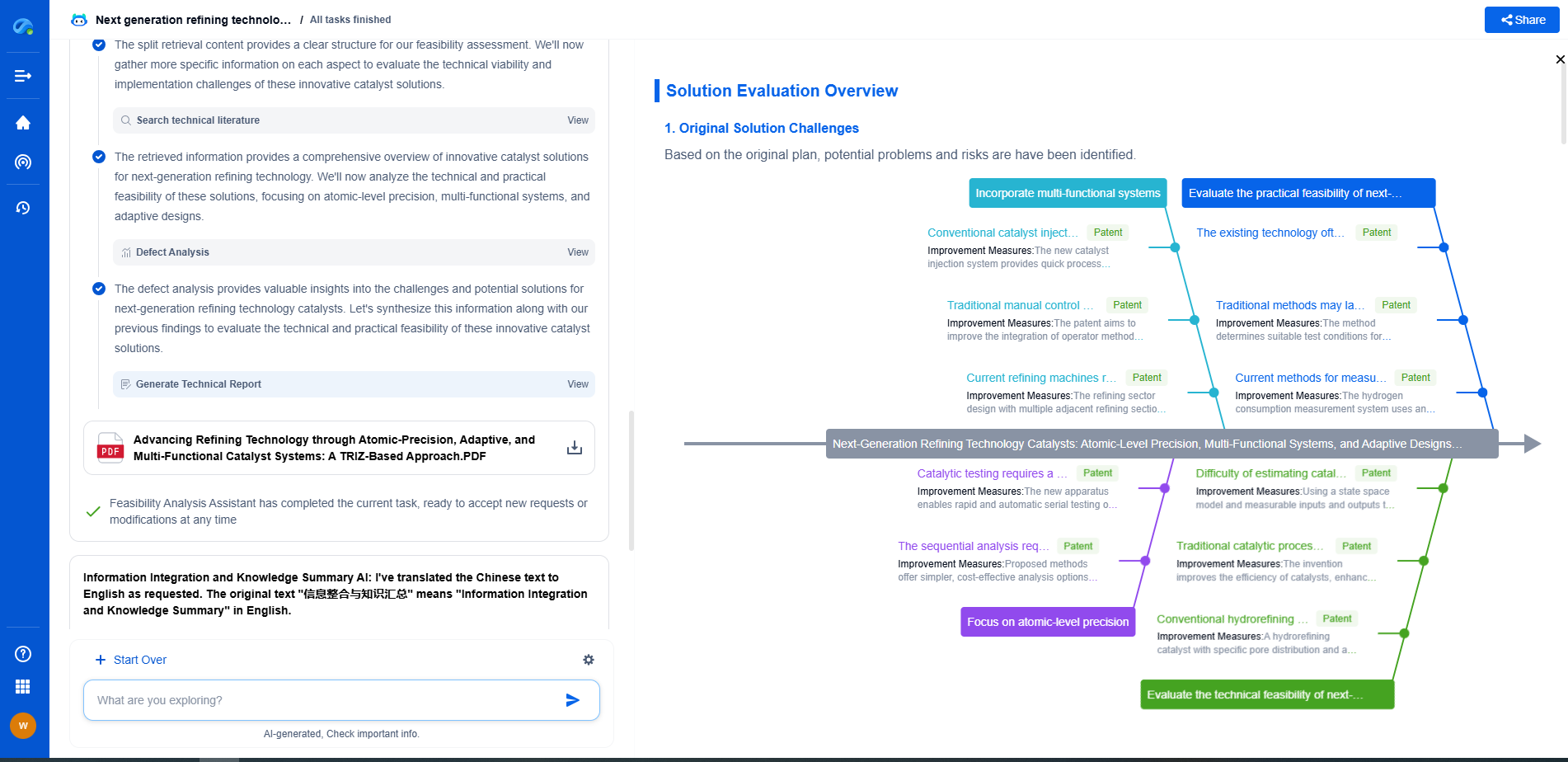PMT Gain Drift Compensation in Long Experiments
JUL 15, 2025 |
Photomultiplier tubes (PMTs) are indispensable tools in various scientific research fields that require the detection of low levels of light. Their high sensitivity and fast response times make them ideal for applications ranging from nuclear physics experiments to medical imaging. However, one of the key challenges researchers face when using PMTs in long-duration experiments is gain drift. Gain drift refers to the variation in the amplification factor of the PMT over time, which can lead to inaccuracies in data if not properly compensated.
Understanding PMT Gain Drift
Gain drift in PMTs can be attributed to several factors. The most common causes include temperature fluctuations, aging of the PMT components, and environmental changes. These factors can alter the multiplication process within the PMT, leading to a drift in the gain. For example, a rise in temperature can increase the dark current within the PMT, causing an apparent change in the gain. Similarly, over time, the cathode and dynode materials may degrade, affecting the electron multiplication process.
Impact of Gain Drift on Long Experiments
In long-term experiments, where data integrity is paramount, gain drift can significantly impact the results. For instance, in a multi-year experiment measuring low-intensity light signals, even a small drift can accumulate over time, leading to substantial errors. This makes it essential for scientists to implement strategies to monitor and compensate for gain drift to ensure accurate and reliable data.
Strategies for Gain Drift Compensation
1. **Regular Calibration:**
One of the most straightforward methods to address gain drift is regular calibration of the PMTs. By frequently checking the PMT response using a stable light source or reference signal, researchers can recalibrate the system to account for any drift. Although effective, this method can be labor-intensive and may not be feasible for extremely long experiments or those conducted in remote locations.
2. **Temperature Stabilization:**
Since temperature changes are a significant cause of gain drift, maintaining a stable temperature environment around the PMT can mitigate some of the drift issues. This can be achieved by using temperature-controlled enclosures or by implementing active temperature monitoring systems that allow for real-time adjustments.
3. **Software Compensation Algorithms:**
More advanced experiments may incorporate software algorithms designed to compensate for gain drift dynamically. By analyzing trends in the PMT output and environmental data, these algorithms can adjust the gain settings in real time, ensuring a consistent response. This approach requires robust software development and validation but offers a high degree of flexibility and precision.
4. **Hardware Solutions:**
Some researchers opt for hardware-based solutions, such as feedback control systems that automatically adjust the high voltage supplied to the PMT in response to detected drift. While this method can effectively stabilize the gain, it may introduce additional complexity and cost to the experimental setup.
Case Studies and Applications
To illustrate the practical application of these strategies, consider an astrophysics experiment designed to observe faint cosmic rays over several years. By implementing a combination of temperature stabilization and software compensation, the researchers were able to maintain a consistent PMT response, leading to more reliable data. In another example, a medical imaging study employed regular calibration and hardware solutions, resulting in improved image consistency and diagnostic accuracy.
Conclusion
Effective compensation for PMT gain drift is crucial for the success of long-duration experiments. By understanding the underlying causes and implementing a combination of strategies, researchers can minimize the impact of gain drift, ensuring the integrity and reliability of their data. As technology advances, the development of more sophisticated compensation techniques will continue to enhance the performance of PMTs, enabling even more precise scientific discoveries.
From interferometers and spectroradiometers to laser displacement sensors and fiber optic probes, the field of optical measurement is evolving at light speed—driven by innovations in photonics, MEMS integration, and AI-enhanced signal processing.
With Patsnap Eureka, biomedical innovators can navigate cross-domain insights in optics, electronics, and biocompatible materials, while discovering IP trends across academic, clinical, and commercial datasets.
💡 Fuel your next breakthrough in optical health tech—start using Patsnap Eureka to unlock deep insights today.
- R&D
- Intellectual Property
- Life Sciences
- Materials
- Tech Scout
- Unparalleled Data Quality
- Higher Quality Content
- 60% Fewer Hallucinations
Browse by: Latest US Patents, China's latest patents, Technical Efficacy Thesaurus, Application Domain, Technology Topic, Popular Technical Reports.
© 2025 PatSnap. All rights reserved.Legal|Privacy policy|Modern Slavery Act Transparency Statement|Sitemap|About US| Contact US: help@patsnap.com

